Although it needs revising I share a paper which I think I presented first in Mexico – some of the thoughts might be useful to others.
—–0—–
The Ineffable in Everyday Teaching-
doorways to spiritualization as
that which makes of the parts a whole
By Roger Prentice:
part of SunWALK
an integrative spiritualizing model of Holistic Education
Ineffable:
1 too great or intense to be uttered in words
2 too sacred to be uttered
3 indescribable; indefinable
Sacred:
Worthy of or regarded with reverence and awe
Awe
Overwhelming wonder
What is the shape of the wind?
There is a Zen notion that the shape of the wind is the shape of the branch round which the wind blows.
1 Introduction: – what am I actually doing with this thing called holistic education?
What is your answer when someone says about Holistic Education, “What exactly is that?” How happy are you with the answer you give, especially if it is in just a short conversation, when you sense that you, and the other person, are ‘from different planets’, metaphorically-speaking? This has happened to me and I’m first going to tell you the story of how I didn’t handle such a situation very well at all.
A few years ago I was invited to Windsor castle for a weekend. Its not the kind of thing that has happened before, or since, and I don’t know how I came to get the invite, but I did. It wasn’t from Her Majesty or the Duke, but from the man in charge of running courses, mainly Christian weekends, in a centre attached to the very beautiful St George’s chapel, which is the royal family’s own sacred spot, within Windsor castle. By the way we all had to pay for our accommodation.
No member of the royal family attended that course, though apparently they quite often do. Instead, at a pre-dinner drinks party, I found myself, for a few minutes, with the General, that is the Governor-General, who is the boss of the castle, on behalf of her majesty. He must have been a general from one of the guards regiments because he was about 3 metres tall, and wearing very very expensive Harris Tweed suit. “Hello”, he said, “ and what do you?”
This is the answer I didn’t give;
“Well General I devote myself to that ineffable space, mystical almost, between the three modes of engagement of the human spirit, caring, creativity and criticality, that, for me, perform a magical dance, when I’m in holistic education dialogue with children or adults.”
That’s what I didn’t say. But that’s the truth of the matter. That’s what I actually do. That’s what I, and many who seek to teach holistically are about. Hopeless idealism I know – but it stops me from hanging around street corners, or entering organized crime!
I couldn’t really tell it as it is. So instead, of course, I muttered, a bit half-heartedly, something about trying to cater for the whole child, the usual stuff that is written in every school prospectus, but which, if you scratch below the surface, has little or no meaning compared to what actually goes on.
It’s not easy is it – to capture the essence, the heart of holistic education, and then communicate it succinctly? What is the essence? Where is it to be found? Can we bottle it? If it is in front of us would we recognise it?
2 Individual genius: – as creator of doorways to the ineffable
Even if we recognize the heart of the matter do we know how it can be developed in other teaching, in our case in holistic teaching? One of my all time heroines, is the educational drama teacher Dorothy Heathcote. She is probably one of the two or three greatest practitioners of holistic education there is, and probably the only true genius I have met. But it seems to me she has a problem; and so do we, with her. The problem is that after nearly half a century of inspiring teaching no one seems to have captured what she does in such a way as to make it replicable within mainstream teaching. This is partly because mainstream teaching has become more and more instrumental, positivistic an mechanistic, but partly it is to do with the special nature of what she does, and who she is. Even describing what she does is not easy – even though countless generations of teachers have been influenced by her. A relatively recent doctorate by Sandra Heston is an exception to the lack of good description. Sandra Heston has also undertaken the monumental task of classifying Dorothy Heathcote material. Sandra’s web-site at http://www.partnership.mmu.ac.uk/drama/HESTON/default.html will tell you;
Dorothy Heathcote has been described as one of the greatest teachers of this century. In spite of being labelled an early academic failure, she was to metamorphose from “Yorkshire mill-girl weaving war-time parachutes…to internationally-renowned ‘guru'”
She changed the way many teachers thought about both drama and the school curriculum. Essentially self-taught, Heathcote was a practitioner and disseminator of a unique methodology based on the use of drama as a tool to stimulate holistic learning.
Having watched her work, and having interviewed her, I agree with Sandra that Heathcote should be seen not just as a great teacher of educational drama, but as a great educator. However she more than other great educators, such as Professor Matthew Lipman about whom I will speak later, has a magic that is difficult to define or imitate or reproduce. The difference between the merely great and the genius, is that the genius creates a new reality, and makes you see things differently and not just better. The genius is much more independent of what has gone before. She uses it, but transcends it, and thereby creates a new reality.
There is also the fact that to understand Dorothy you have to learn her language, she talks for example about giving children the ‘mantle of the expert’, by which she means empowering children in dramatic role-playing. She on the other hand is barely conversant with the language of say the holistic education community. Effective translators are called for! I can’t tell you what her magic is. You can see it, she still teaches, or via a video from the University of Newcastle. I will tell you however of what I actually observed. At the age of 73, this short stocky woman is capable of standing straight for 3 or 4 long days directing 70 young adults, students with learning disabilities, some very severe. Added to the students there was a company of actors, students from a high school plus other adults. Through continuous improvisation, she created a magical experience for all. Out of what? Out of Shakespeare’s Julius Caesar or Midsummer’s Night Dream or some other such play, or out of real, important happenings in the communities to which the children or students belong. I had never even heard of such a feat, let alone witnessed, until comparatively recently. Yet she also works with senior managers, the mentally ill, police, and teachers – and, in his heyday, Marshall McLuhan, so she let drop!
Emulating the magic of individual genius is one challenge, but understanding the essence of holistic education generally is another equal challenge. Our challenge is to make the magic that the individual genius weaves, and something of the essence of holistic education generally become part of every good teachers work. Perhaps we an never fully replicate outstanding individual genius but we can learn some of the characteristics that will enable the rest of us to teach a level or so higher than we otherwise would. In this experience of the Whole is vital, but so is knowledge of the parts. By having the means for the former we can stop ourselves being trapped, as mainstream education is trapped, in the hell of fragmentariness.
3 A literary leaning: – in looking for doorways for the ineffable
Studying holistic education, as well as defining it, leads to practical problems. I can’t be the only one who has problems with the ironical difficulty of having to study and talk about holistic education in linear and fragmented ways. I have this problem right now. My heart is full of stuff I long to convey to you but it has to be communicated mainly left-brain to left-brain – its fragmented and linear when the reality is whole and complex. To what should I turn for help? What doorway might I open? If I could paint I would try to paint you some pictures, something a bit more subtle than an odd overhead transparencies or two. If I could dance perhaps I would try to dance some of my personal truth – but that would not be a pretty sight, and I fully intend to spare us both that embarrassment. So I’ll read you three short poems by different poets, very simple poems, but ones that help define one of the doorways to the ineffable heart of Holistic Education.
Shallow Poem
I’ve thought of a poem.
I carry it carefully,
nervously, in my head,
like a saucer of milk;
in case I should spill some lines
before I put them down. Gerda Mayer
Here is another equally short, equally brilliant poem this time by Stephen Spender;
Word
The word bites like a fish
Shall I throw it back free
Arrowing to the sea
Where thoughts lash tail and fin?
Or shall I pull it in
To rhyme upon a dish?
And thirdly by Charles Causley;
Kelly Wood by Charles Causley
Walking in Kelly Wood, gathering Words
Frail as spilt leaves, fine sticks of sentences,
Spirals of bracken from the fallen ground,
I listen for the silences of stone,
The stream’s white voice, the indifference of birds.
Safe in my quiet house I lay them out
– Leaf, stick and bracken – in the hearth’s cold frame,
Strike steel on flint against the page of dark,
Wait patiently for the first spark. A flame.
Don’t these three poems say more about the nature of creativity than dozens of books of psychology. Don’t they also combine what is said about creativity with what it is to be human – to care and be critical as well as to create?
Metaphor is a means for creating the space in which public and personal knowledge can come together, happily, in peace without competition, without making the other wrong, and inflicting defeat. Metaphor is a prime doorway to enable depth of engagement in learning, as well as to the deeper experience of life generally.
Story is another such doorway. This Zen story also enables us to get a glimpse of one facet of the ineffable centre of holistic education;
The Strawberry
A Zen Tale from Japan
There was once a man who was being chased by a ferocious tiger across a field. At the edge of the field there was a cliff. In order to escape the jaws of the tiger, the man caught hold of a vine and swung himself over the edge of the cliff. Dangling down, he saw, to his dismay, there were more tigers on the ground below him! And, furthermore, two little mice were gnawing on the vine to which he clung. He knew that at any moment he would fall to certain death. That’s when he noticed a wild strawberry growing on the cliff wall. Clutching the vine with one hand, he plucked the strawberry with the other and put it in his mouth.
He never before realized how sweet a strawberry could taste.
Story is central to being human and therefore central to Holistic Education;
MacIntyre (p.201) takes the view that we, humanity that is, are in the midst
of a story & that is through the story and stories that we understand each other
and ourselves.
“…man is in his actions and practice, as well as in his fictions, is essentially a storytelling animal”
he says.
Storytelling according to Chinua Achebe, the Ibo novelist is
“the basis of our existence – who we are, what we think we are, what people say we are, what other people think we are.” John Windsor The Inde 20.8.94
According to Cox, in the Cox Report on the teaching of English
Narrative has been described as a primary act of mind; children construct their world through story…. This process should be an active experience, involving questioning, problem solving, hypothesising and imagining.’
Cox Report English 5-11, Nov. 1988
All stories are supposed to consist of Exposition:Conflict:Resolution but what about the Strawberry story what and where is the resolution there?
I am not a dancer, I’m not a painter; if anything I am a wordsmith and from time to time during my presentation, I am turning to the poetic, to images in words to balance the linear. In turning to poetry we find one doorway for the ineffable since we find that the meaning can ,almost infinitely, exceed the meaning that is in the sum of the words used. Such meaning-making possibilities that the greatest poets and writers create, seem to reverberate through all time and all space. Such meaning transcends the you and me and our struggle to communicate lineally, left-brain to left-brain. In visiting such worlds that the poets create we seem to be freed temporarily of the limitations of this world. We seem to pass beyond the demands that come from this world of opposites as is described in this short piece from Herman Hesse;
Our mind is capable
of passing beyond
the dividing line
we have drawn for it.
Beyond
the pairs of opposites
of which
the world consists,
other,
new insights begin.
-Herman Hesse
In a few minutes I hope to show you more of what I mean by the literary as doorway, to the ineffable heart of holistic education through a poem from the great contemporary Irish poet, and Nobel-prize winner, Seamus Heaney. But before we star gaze any further I want to answer a question and the question is this;
4 Key elements in any model of Holistic Education – what does any model of holistic education have to provide an account of?
What are key elements in any model of Holistic Education – and here for a moment more we’re back to fragmentation ?
Perhaps you will agree with me if I say that anything that purports to be a model of Holistic Education has to provide answers to these 7 questions.
How do we account for or use;
1 mystery & ultimate reality in a/our model of HE?
2 story, stories & the wisdom/spiritual traditions of humankind in a/our
model of HE?
3 consciousness & consciousness raising, in a/our model of HE?
4 learning & teaching – in a/our model of HE?
5 being human, positively and fully, in a/our model of HE?
6 meaning and meaning-making in a/our model of HE?
7 knowledge and knowing in a/our model of HE?
Any model of holistic education I suggest has to provide a convincing account of these 7 questions, and the realities to which they point. It also has to decide on how these elements fit together theoretically and in practice. But there is one more question, even harder perhaps than these seven. Imagine yourself stuck between any two of your most challengingly different country-men or women at a dinner. One asks, “Tell me Maria, or Juan,” or whatever name you have, “what exactly is this whole of which you speak? And what is it that makes of the parts a whole?” Ahh so we have an eight question.
8 How do we account for and use that which makes of the parts a whole in our model of HE?
Now this is a good question to have an answer for! What answers should we give to this?
God willing, and Ramon’s Foundation willing, by the end of this conference we will all have better answers to that question! This presentation is my pennyworth to being better prepared should I meet another keeper of a castle who asks such a question.
We are starting to see that at the heart of holistic education there is the ineffable, the transcendent spirit, the mystical reality, in which the whole is always something greater than the sum of the parts. Here I want to put another of my cards on the table we are also speaking about aesthetical as the same reality of experience. All of these types of experience, the ineffable, the mystical, the aesthetic and so on, are, from the point of view of the basic dynamic in holistic education, the same – although they may not be of the same worth. They all are in the first case experiences. They are generally thought of as very rare, though studies have shown that they are not. Secondly they are more or less transformative.
But are they not there, more or less every day in classrooms, like specks of gold in a pan-handler’s sieve waiting to be recognized – if we teach in a right way? One of their unifying characteristics is that they take us out of ourselves, to use common parlance, or, to use a slightly more archaic phrase, we are ‘transported’.
Putting this eighth question with the other six we again point up the tension between our concern for the whole and our having to deal with it fragmentedly. There is a problem! The problem is connectedness. We are used to asserting that this, connectedness, is the solution to the chief evil, namely fragmentedness. But connectedness is also a problem – at least when trying to think and write in a straight line! The problem is that knowledge is connected to the history, and the history is connected to the beliefs, and the beliefs are connected to the personal history, and the personal history is connected to the level of consciousness of the teacher, and the level of consciousness of the teacher is connected to all of those social forces that bear upon the education of the teacher, let alone her own personal history, and the leg bone is connected to the back bone and the back bone is connected to the neck bone, and the neck bone is connected and into infinite complexity…….. How and where can we create simplicity? Where do we most need simplicity? I draw an answer from the model I have been developing, which I call SunWALK.
5 Nurturing the human spirit – the heart of the SunWALK model of holistic education
In my own model the domain where I really want simplicity is in the understanding the teacher has of what he or she is doing in teaching pupils. What is in her, or his, heart, clear as a bell, as s/he faces the class and manages the lesson. Teachers need such clarity and certainty and secure foundation. Primary school teachers in the UK were supposed, under the hideous National Curriculum, to face classes with 210 Attainment Targets in mind. Multiply these210 Attainment Targets with I don’t know how many other factors. Multiply the product of that with the number of children, since all were supposed to have individual learning paths. Hell enshrined in policy. “Truth is a single point; the ignorant hath multiplied it.”
My answer here is very simple. All education is about one task, and one task only; and that is nurturing the human spirit, within the community of humankind.
Perhaps you will go with me if I suggest, as a metaphor, that we could consider that that human spirit is, in a person, white light. Then imagine that, as in the world of colour there are three primary colours. Then imagine that all human expression is a mixture of those three primary colours. Then imagine that those three primary colours are caring, creativity and criticality.
This light in the first form is chi or ki or id or in Rollo May’s wonderful book Love and Will it is the daimon. All such names refer to the life-force, that drives us on. It is spirit that then manifests as mind and body and soul. This is the inner world of being human, which, as we evolve through early childhood, becomes consciousness. Teachers like parents are both in the business of nurturing the human spirit in children, of raising consciousness, but in somewhat different contexts.
In practice caring, creativity and criticality are three modes of engagement, engagement that we have firstly with the world-at-large and secondly with the self. From the interaction between caring creativity and criticality, from within the person, and interaction with the world-at-large, or with the self, capabilities grow.
The fourth ‘c’ is community since the human spirit is only ever developed in community, starting with family and local community and school classroom.
These four then are the teacher’s task, that is nurturing of the human spirit;
caring,
creativity,
criticality,
in community, including in the spirit of service to others.
Nurturing the 3Cs, and facilitating the class as community that’s it – the rest is mere information. In the absense of true undersatnding politicians especially always fall back on the transmission of information. Apart from a notion that even idiots can understand it also has the advantage, as Freire taught us in his banking metaphor of education, of wielding power.
But information is the fuel not the fire. The fire is the human spirit; caring, being creative or exercising criticality. Concerning the secondary position of information you will recall the wonderful rhetorical questions of T.S. Eliot
“Where is the wisdom we have lost in knowledge?
Where is the knowledge we have lost in information?”
Someone apparently added, “And where is the information we have lost in data?” Each of these steps is progressively de-humanizing as we move downwards from wisdom toward data. As we move downward we move further from the human image, being custodian of which Huston Smith says, is the central concern of the humanities. The downward staircase: wisdom – knowledge – information – data. Data is where it is hardest to see the image of being human, data is smart bombs from 30,000 feet. Even information informs, and therefore that brings the possibility of transformations and therefore of moving up to toward wisdom, but data without a secure, inclusive, context of being human is the primrose path to the everlasting bonfire.
Here we are saying that the task of education is to develop heart and mind and creativity and social capabilities such as teamwork. These are permanent in their importance. Information isn’t – do you think that information, and the particular ordering of information that is current will be the same in ten year’s time?
The 4 Cs that’ it, that’s all you do, but, and here is the nub of the matter, you must always do all four, have all four running. This is not to say they should all be fully present in a single lesson, though they can well be. So long as there is balance over a number of days or weeks, balance that is between intense engagement in all four Cs. When all four are present that is when the chance of magic is greatest.
What happens when all four aren’t together? The answer is you get the kind of problem that exists in respect of moral education. Moral education is the four Cs – in the light of higher-order values. Moral education is not a thing, a programme to be added, as a bolt-on extra. It is a dimension of being, of caring and creating and exercising criticality – in community with others, and in the light of sources of higher-order values. So the teacher knows what she or he has to teach – human beings, being positively and fully human as judged by the great spiritual and wisdom traditions.
Similarly where does meaning come from – it comes from the four C’s plus values. Similarly my answer to the supreme question, “What is it to be human, fully and positively?” My answer is that it lies in being caring, creative and in criticality – in community – in the light of higher-order values.
This view of the human spirit and the 4Cs is the heart of the model I have been developing, which I have named SunWALK. The human spirit is at the centre of a set of seven sub-models. There is no time to even touch upon them.
SunWALK refers to Willing Action through Loving and Knowing in the light of the Sun of higher-order values. Everyone’s set of higher-order values comes from a different variety of sources, but they are nevertheless the means by which the path of life is illumined. The comedian Dave Allen always ends his programmes, “May your God go with you.” We all walk the path of our lives in the light of the best we can construe of what God, or Truth, Beauty and Goodness, is. We need to help children explore the fact that the Sun that illumines the paths of their lives stems from two sources. Firstly it stems from that which we internalise unthinkingly. BUT increasingly, as they get older, it is a matter of what, or with whom, they choose to identify – insofar as they can resist media manipulation. The 4 Cs approach makes possible self-transformation. It provides deep engagement and enables children to develop early in social and moral capabilities as well as intellectual virtues – several or many years ahead of their peers in my experience.
In teaching with all four Cs active, in the light of higher-order values – this is where and how we start to find doorways to the ineffable, the sacred, the mystical that is the heart of holistic education;
6 Honouring the ineffable, sacred, mystical centre – as everyday teaching experience
Caring, creativity and criticality, I have argued, represent the three primary modes of engagement, engagement that is of the human spirit with the world-at-large, or with the self. The three are the three primary colours of the interior self, of the human spirit. We can think of these three as a split light from a prism. Diagrammatically we could also see the three as over-lapping circles.
I have talked about the input for the creative – the arts and aesthetic experience, with special reference to poetry and story. I have talked about input for the caring – higher-order values. Higher-order values in schools come in three ways a) the way the process is conducted that is the rules of process and whether or not the teacher walks the talk, b) the content chosen for study and c) the values and ethos of the school as a whole e.g. the Catholic sources in a Roman Catholic school, its Assemblies etc.
I should now mention briefly the third input ‘philosophical inquiry’, that which develops criticality, and the star in this case is a man called Professor Matthew Lipman.
Mathew Lipman and his Philosophy for Children programme
Professor Matthew Lipman of Montclair College New Jersey taught me the value of philosophical dialogue, in the long line of such teaching from the great Socrates. He is certainly one that you might want to place in your ‘starry firmament’. Lipman with Ann-Margaret Sharp his chief collaborator, and others, has been developing his ‘Philosophy for Children’ programme for more than two and a half decades. He was honoured by the US government, and he continues to be ignored, as is the way of things, by the vast majority of his fellow countrymen.
Lipman was professor of philosophy at Columbia University. He thought philosophy too important to be left to the elite called philosophers. Consequently he left his high status job and went to a small college, Montclair, There over two and a half decades he has been developing his Philosophy for Children programme, which is now used in many parts of the world, including Mexico.
Lipman said if you want reasoning and reasonable graduates of the education system you must teach them to be reasoning and reasonable BY BEING reasoning and reasonable. That is to say, the process must walk the talk.
He claims, and I have found it to be completely true, that children love the kind of things that philosophers love. The disadvantage, that normally keeps children and philosophy away from each other until say 16 or 18 years of age is the supposition that they have not sufficient command of abstract language. Lipman’s stroke of genius was to create stories, stories that are richly embedded with possibilities for philosophising. The process is simple at one level – text – generation of questions by the children – philosophical discussion. That’s it. However there is a difference between waving a sword around and being a Samurai swordsman.
PFC, well done, is a masterful process for one of the three primary colours of the human spirit; criticality.
Human expression as an infinite admixture of the three primary colours caring, creativity and criticality
Diagrammatically the three modes of engagement overlap, the colours mix into an infinity of hues in each individual human expression, be it primarily a caring expression, a creative expression or an expression of criticality. Whatever the metaphor, from the centre comes the possibility for the ineffable, the sacred, the mystical – for at the centre is the well-spring of human possibility. This is true of the centre of the person in the case of individuals, but here I am speaking also of the centre of keeping these three yoked together in dynamic interplay – the three horseman, of caring, creativity and criticality.
And, if not too much ego is getting in the way, there is the possibility of what the Baha’is call, “Breaths of the Holy Spirit, that is the immanent God is experienced as in the statement from the Hidden Words by Baha’u’llah;
Turn thy sight unto thyself, that thou mayest find Me standing within thee, mighty, powerful and self-subsisting. (Baha’u’llah: Arabic Hidden Words, p. 13)
In moments of sublime attunement we feel the presence of God. What I am saying is that this is possible through this way of teaching, not just through personal spiritual discipline.
Diagrammatically where caring, creativity and criticality overlap, in the no-man’s territory we might say, there in that central domain is where the possibility for the ineffable, sacred, mystical, aesthetical experience arises – at least in my experience of teaching not just children but adults as well, and good learning for adults is healing as well as extending or entertaining.
Here I must mention briefly the view of the teacher-class relationship as consisting of multi-level dialogue. One level of dialogue is that of philosophical inquiry. A second level of dialogue is with individual pupils, part of which is overt, part of which is tacit. A third level is at the level of prayer and meditation, as a vehicle of the love the teacher has for those s/he is teaching. A fourth level is very deep and emerges as symbols, and what ‘just pops into the mind’, e.g. in other forms of dialogue. An illustration of this exists in the lessons I videoed in which I was seeking to extend the understanding of a class of 12-13 year olds understanding of the nature of story. In the middle of the first recorded lesson of philosophical dialogue for some reason I went to the board and drew two fishes. One was a line drawing of a fish. The other was a fish, of similar shape, delineated by shading all around. I asked the class to consider what relevance if any the drawings might have to the discussion we were having. No answer came about that, but other contributions came on other lines that were being followed. Then a particular boy gave his view. This boy was one who was frequently in trouble with teachers, occasionally with me, and whose work was not well done and not of a very high standard. This is what he said. “Mr Prentice I think the line drawing version represents bounded imagination. The other drawing represents unbounded imagination.” Now, of course, this was a stunning, deeply insightful comment and an example of what I want to say about the closeness of thought and spirit in dialogue that is really working, and I here speak of philosophical dialogue. When it is really working well it is as if the pupils minds and the teacher’s mind have become one. This of course is a kind of transcendent experience where the known and knowable and the ineffable and sacred are present in dynamic relationship.
It will probably not come as a surprise for me to tell you that I was a teacher of English. Within that specialist discipline I applied my SunWALK model. After philosophical inquiry I would ask the pupils to do creative work and then more philosophical inquiry and so on. The session that threw up the fishes and the penetrating comment from the ‘deviant’ boy was part of several weeks work with 12 to 13 year olds on story criticism and writing. As a text I used one sentence, by an Italian writer who claimed to have written the shortest story in the world. Here it is, please don’t cough or you’ll miss it;
“When I woke up the dinosaur was still there.”
Did someone cough – now I’ll have to read the whole thing again… The classes argued for lesson after lesson on everything from the inadequacy of the story against teacher expectation, or what they understood to be the defining characteristics of a story to in depth discussion of whether meaning was in the marks on the page or in the act of reading. I didn’t know they knew all that. They didn’t know they knew all that. Without philosophical inquiry the potential, the tacit, would not have been manifested. Philosophical inquiry, then creative writing, then, using the products of the creativity, do more inquiry – left-brain then right brain then left-brain, all in the presence of heart –centredness and respect
This is the key to this most powerful way to teach, back and forth howsoever many times are appropriate. The switching back and forth can be from day to day or even from 10 mins to 10 mins. Neither the creativity nor the philosophical inquiry is sufficient in themselves – which is why I am committed to holistic education, above philosophical inquiry, even whilst I recognise PFC as the great teaching process of the 20thC . Even though Matthew Lipman has shown us how to teach better than Socrates, philosophy on its own can never be enough because it never leaves the left-brain. Like yin and yang, philosophy and poetry, need each other. And they also both need an ethos, and process and content, that expresses higher-order values.
We can explore more of this on Friday in the workshop, or outside
of sessions.
7 Common ground: – the ineffable, the sacred, the mystical and the aesthetical
My own joy in teaching, my experience of the ineffable and the sacred in the teaching process came when three sources came together. The first was my education as a teacher at Bulmershe College, at the University of Reading, and it was a wonderful experience, from beginning to end – not many people say that these days. Within the course as a whole, the most important for me was the course as a student of English. Within that was what great critics such as T S Eliot, and the Cambridge don, F R Leavis called The Great Tradition of English Literature, and the process of practical criticism. Perhaps here is the place to mention one of the great statements about Holistic Education namely Charles Dickens novel Hard Times. Leavis was the person responsible for bringing this work back from obscurity. Now Oxford University Press announce it as possibly Dickens greatest novel. Why do I claim that it is a great statement about Holistic Education? The first few chapters present a contrast between the excesses of fragmentation, in the form of utilitarianism, and the wonder, magic and ineffability of the circus, its very ring a symbol of the infinite, the unknowable and ineffable.
You can get a sense of the fragmentation side of things from the following;
‘NOW, what I want is, Facts. Teach these boys and girls nothing but Facts. Facts alone are wanted in life. Plant nothing else, and root out everything else. You can only form the minds of reasoning animals upon Facts: nothing else will ever be of any service to them. This is the principle on which I bring up my own children, and this is the principle on which I bring up these children. Stick to Facts, sir!’
“Girl number twenty,” said Mr. Gradgrind, squarely pointing with his square forefinger…….
Give me your definition of a horse.”
(Sissy Jupe thrown into the greatest alarm by this demand.)
“Girl number twenty unable to define a horse!” said Mr. Gradgrind for the general behoof of all the little pitchers. “Girl number twenty possessed of no facts in reference to one of the commonest of animals! Some boy’s definition of a horse. Bitzer, yours.”
“Bitzer,” said Mr. Gradgrind. “Your definition of a horse.”
“Quadruped. Gramin ivorous. Forty teeth, namely twenty-four grinders, four eye-teeth, and twelve incisive. Sheds coat in the spring; in marshy countries, sheds hoofs, too. Hoofs hard, but requiring to be shod with iron. Age known by marks in the mouth.” Thus (and much more) Bitzer.
“Now, girl number twenty,” said Mr. Gradgrind, “You know what a horse is.”
Under such teaching neither girl number 20 nor the poor pitchers of today will know the reality of a horse or the reality, or value, of anything.
The second great river to come to my particular confluence was the writings of the Baha’i Faith, the major source of my spiritual, caring, understanding. The third was Matthew Lipman’s PFC, Philosophy for Children programme. These three are my main, but by no means my only, sources for caring, creativity and criticality, for Truth Beauty and Goodness, and for Wilber’s three ways of knowing, the ‘I’, subjective, artistic way of knowing, the ‘WE’ interpersonal, moral way of knowing and the ‘IT’ objective, public, philosophic and scientific, way of knowing.
When we bring these three together we have a magical process. To switch metaphors, in multi-level dialogue with a class you never know when the pin-ball will roll toward the creativity, the caring or the critical, that is tremendously exciting to be involved in. Which way the process of discovery goes doesn’t matter providing there is balance over time, and balance between the teachers aims and the flow of pupil interest.
Aesthetic experience and the ineffable and mystical
There is time for only a very brief justification for the claim that the ineffable, the sacred, the mystical and the aesthetical spring from common ground.
When we undergo an experience which we could describe as ineffable, sacred, mystical or aesthetical, such experience is characterised by a loss of the ego state, and its strong sense of a separate self. This is the moment when the poem catches us, when we ‘melt’ into a sublime landscape, when we are taken up in adoration in great music. That is to say some flow takes place between the ‘object’ with which we identify, and ourselves, and then for a time we are no more. We are not ourselves in such experience, because we have become one with the ‘other’ – and then we return, subsequently, to ourselves, to our ego state. And when we return later, perhaps seconds, perhaps months or even years, we start to process that experience and make use of it. For a grand example of the ineffable look at Robert Hamilton’s wonderful account, in his book EarthDream, of such an experience that for him is lasting up to a life-time.
But as I have been arguing there are micro forms of such peak experience in the flow of the teaching process, day-to-day – there are opportunities to open the door to the ineffable. After such experience, great or minor, we are not the same. We are either transformed or have the potential to transform.
Of course these visits to, or from, the ineffable and sacred are part of the duality, perhaps the ultimate duality, of existence in this earthly life. In general terms the whole in which we lose ourselves, and the particulars that we pay attention to, are two sides of a dynamic that is interdependent as we can see in this wonderful quotation from Ken Wilber;
“To understand the whole it is necessary to understand the parts. To understand the parts, it is necessary to understand the whole. Such is the circle of understanding.
We move from part to whole and back again, and in that dance of comprehension, in that amazing circle of understanding we come alive to meaning, to value, and to vision: the very circle of understanding guides our way, weaving together the pieces, healing the fractures, mending the torn and fractured fragments, lighting the way ahead – this extraordinary movement from part to whole and back again, with healing the hallmark of every step, and grace the tender reward.”
The Eye of Spirit; an integral vsiion for a world gone slightly mad by Ken Wilber (1997) pub. Shambhala p.1.
Processing the experience I suggest is a matter of having the human spirit energized, and the three means for receiving that energy and expressing it are – to care, to create or to exercise criticality.
Central to my argument has been that such experience is part of being fully human. We, as educators, must not allow it to be forced into an alien realm, to be placed into the category of bizarre anomaly – like the dodo I once saw in a museum case; dead, stuffed, a pathetic reminded me of one kind of insufficiency. In my best years of teaching, teaching 12 to 13 year olds, and with groups of adults, such ineffability was there – in moments and minutes, but also in relationships, and always within the rough and tumble and sheer speed of things that is school life – but it was there. These moments or minutes are not ‘teaching moments’ but are moments of heightened experience from which, and around which, great teaching can take place. This is transcendent teaching, and to do transcendent teaching we need the confluence of the three ‘rivers’ of spirit to engender the caring, the creative and the critical.
These three sources, in confluence, correspond to the intrapersonal in the human spirit. They also, as I have said, correspond intrapersonally to Ken Wilber’s ‘I’, ‘WE’ and ‘IT’ model, and externally to the ancient Greek cardinal virtues of Truth, Beauty and Goodness
Part of our responsibility as holistic education teachers is to maximise the possibilities for children to experience the ineffable, to experience the aesthetic, the mystical AND to provide various means for the children to process that experience. Chief amongst those means practically are as we have seen; reflection & dialogue, expression particularly artistic expression, and thirdly the means to care, through direct service or through vicarious imaginative means such as literature.
My suggestion for teachers is that we should base our work on nurturance, which includes the challenging, of the human spirit, and within that nurturing and challenging, we ought maximise the possibilities for ineffable experience. The ‘ologies’ are largely irrelevant, with some notable exceptions such as transpersonal psychology, because they lost their connectedness with the big picture. The big picture is still there, and it still counts, whatever some post-modernists would have us believe.
8 A thanksgiving:- thank God for those who have resisted the pressure of Flatland knowing, especially the Stars who lead us to doorways to the ineffable
Thank God there are some writers, just a few, who manage to speak to several or all of our chief concerns as holistic educators, and even point to the ineffable. Through them we can start to sense the truth below the surface and then start to excavate, for the truth and beauty and goodness of holistic education.
Regard man as a mine rich in gems of inestimable value. Education can, alone, cause it to reveal its treasures, and enable mankind to benefit therefrom
(Baha’u’llah: Gleanings, Page: 260)
James Taylor in his Poetic Knowledge; the recovery of education
seeks to reveal a neglected mode of knowing and learning, which from Socrates to the middle ages and beyond, relies more on the integrated powers of sensory experience and intuition, rather than on modern narrow scientific models of education…….
“Poetic knowledge” is not the knowledge of poetry, nor is it even knowledge in the sense that we often think of today, that is, the mastery of scientific, technological, or business information. Rather, it is an intuitive, obscure, mysterious way of knowing reality, not always able to account for itself, but absolutely essential if one is ever to advance properly to the higher degrees of certainty. From Socrates to the Middle Ages, and even into the twentieth century, the case for poetic knowledge is revealed…..
POETIC KNOWLEDGE The Recovery of Education James S Taylor
We don’t have time to explore all of the truths touched on here by Taylor;
restoration of an earlier way of knowing, what incidentally Karen Armstrong calls the mythos as opposed to logos, the nature and importance of intuition, the dominance of what Wilber calls ‘flat-land’ thinking and so on but before we move on we should note the distinction in, ‘”Poetic knowledge” is not the knowledge of poetry…’ – the knowledge spoken of here is something we are in, and which is in us.
Perhaps the stars we are getting glimpses of can also actually make all of
those concerns – mystery, story, learning and teaching, being human, making meaning, knowledge and knowing – reverberate together, and shine on us with the brilliance of our own star, the sun. Do they all speak, all reverberate, here in Seamus Heaney’s poem called ‘Personal Helicon’.
Mount Helicon is a mountain in Greece, that was, in classical mythology,
sacred to Apollo and the Muses. From it flowed two fountains of poetic inspiration.
The poem describes how childhood experiences become part of the
metaphor for Heaney as a poet.
Personal Helicon for Michael Longley
As a child, they could not keep me from wells
And old pumps with buckets and windlasses.
I loved the dark drop, the trapped sky, the smells
Of water-weed, fungus and dank moss.
One, in a brickyard, with a rotted board top.
I savoured the rich crash when a bucket
Plummeted down at the end of a rope.
So deep you saw no reflection in it.
A shallow one under a dry stone ditch
Fructified like any aquarium.
When you dragged out long roots from the soft mulch
A white face hovered over the bottom.
Others had echoes, gave back your own call
With a clean new music in it. And one
Was scaresome, for there, out of ferns and tall
Foxgloves, a rat slapped across my reflection.
Now, to pry into roots, to finger slime,
To stare, big-eyed Narcissus, into some spring
Is beneath all adult dignity. I rhyme
To see myself, to set the darkness echoing. by Seamus Heaney
Joe Pellegrino comments;
Heaney is here presenting his own source of inspiration, the “dark drop” into personal and cultural memory, made present by the depths of the wells of his childhood. Now, as a man, he is too mature to scramble about on hands and knees, looking into the deep places of the earth, but he has his poetry. This serves as his glimpse into places where “there is no reflection,” but only the sound of a rhyme, like a bucket, setting “the darkness echoing.” This is the final poem in his first volume, and, together with his first poem in that volume, “Digging,” acts as a bookend to the collection.
Joe Pellegrino http://www.ibiblio.org/ipa/heaney/heaney.bio.html
Did the earth move for you? Or in this case did the well, the well-spring, move – in the making of experience a vital re-creation and even an ontological transformation? I shiver again at the thrill of that meaning that shook me when I first read the poem . Generally speaking meaning made is a mix of the subjective and objective, the personal and the public but the effect of ‘punch-lines’ like I rhyme/ To see myself, to set the darkness echoing is so powerful and in a sense pure that it simply lets your heart expand. You can become more as a result of the resounding effect of such a poem.
I can sense the change it wrought in me just as I can feel the rough stone that he, and I and we all, have leaned on at some time. Remember what Taylor says about ‘poetic knowledge’ it ‘relies more on the integrated powers of sensory experience and intuition’. Remember Wordsworth’s view that poetry is emotion recollected in tranquillity.
Philosophy and poetry as complementary doorways
I want to suggest that poetry and philosophy within the kind of teaching I have been describing are complimentary not opposites. Here is a definition of philosophy that I quite like;
Philosophy is the attempt to gain systematic insight into central and perennial human concerns: the nature of reality, the nature of thought, the nature of experience, and the nature of value.
http://www.augustana.edu/academ/philosophy/index.htm
But surely poetry, and as I shall argue the mystical, also aims to gain insight into reality, through, experience and value. We need to pay more attention to those who can write across the poetry-philosophy space. One such writer, supremely so, is the Jewish rabbinical writer and social activist Abraham Joshua Heschel – and for us he does this in his book Who is man?.
Heaney much earlier in his career wrote what is for me one of the key statements that acts as a doorway to understand the ineffable heart of holistic education – it is a kind of mixture of philosophy and poetry. Here he is speaking of something very deep in our business of holistic education; the transformation of energy to meaning, and presumably the opposite as well. He says;
“I began to write poetry in 1963, craft-ridden, but compulsively attracted to those guardians of technique like the water-diviner and the untutored musician, (wo)men whose wrists and fingers receive and uncode energies into meanings. To learn their ease and grace in the half-way station between the cellars of self and the courtyards of the world around them has been and will be my study so long as I continue to write.”
Seamus Heaney p101 Corgi Modern Poets in Focus No 2 Ed Jeremy Robson 1971
Doesn’t that wonderful statement make the elements of Holistic Education mystery, story, learning and teaching, being human, making meaning, knowledge and knowing – reverberate together. Can we not feel the connectedness and inter-relatedness of knowing and doing, of spirit and form, of respect and self-assertion, of the subjective and objective? And the point that we come to is that the known and knowable needs the ineffable and beyond the ineffable the mysterious. Education to be holistic has to predicated on the inter-dependence of the mysterious and the knowable.
9 Conclusion
What then is in common between the ‘stars’ whose light we have glimpsed? They capture the ordinary and make it reverberate, but they also leave room for meaning to flow in…… The doorways are not just one way doorways. Meaning is not just created, it also flows in. Perhaps this is the same as Heschel saying that God is in need of man – since we are supposed to become that which will manifest His image.
I have here tried to present one subject in terms of another; an essentially poetic thing to do – epistemology in terms of poetry, poetry as the means to epistemology and so on… – all in order to overcome the ironic problem of writing and teaching about the whole fragmentedly, and also perhaps to do what meditation does, send to sleep the guardians at the gate of the unconscious to allow us to sense the wholeness of reality.
I take wholeness as a pre-requisite, a concomitant, to ‘spiritualizing education. In deed I take humanization, spiritualization and holization to be three parts of the single ‘clover leaf’ of a model of holistic education, such as SunWALK.
To think of the clover leaf is to think of Ireland, of course, and I end with a piece I wrote in homage to Heaney, as another attempt to
“devote myself to that ineffable space, mystical almost, between the three modes of engagement of the human spirit, caring, creativity and criticality, that perform a magical dance, when I’m in holistic education dialogue with children or adults.”
Laughable, but true, even though I couldn’t, and probably still couldn’t, communicate it to the General.
In all of what I’ve pointed to, in our short journey together this morning, there is a truth that is still being resisted so powerfully in our Western world. Flatland thinking would have us believe that mind is all – in fact that we are brains on legs. Closer to the truth is that, thought is a subset of feeling, the mind a subset of the heart, logos a subset of mythos.
On Friday I will try to show you some of how all that I’ve pointed to, works in practice when teaching children or adults.
The homage;
Dangerous Transportation;
on being taken ‘too far out’ by the poet Seamus Heaney
INTRODUCTORY BACKGROUND
This homage was written upon reading the Spirit Level collection of poems by Seamus Heaney, he whose hand was taken by President Mary Robinson, to lead the new Nobel Laureate back on to Irish soil.
She stepped down from her high office, and off Irish soil,
to ascend the plane’s steps,
to bear him the nation’s accolade and to re-connect him with
the land of his birth, and of his growing;
a noble woman greeting a noble man;
an exquisitely moving moment.
No act of honour was ever offered more tenderly, more sweetly,
nor, in my case, pierced so deeply.
When she took his hand, half-way up the plane’s steps, I felt
directly connected with all the love and beauty and truth
of Ireland and all the love and beauty and truth beyond.
She now labours for us, to secure human rights for the oppressed.
He, on our behalf, continues to secure voicings of the ineffable.
____________________________
Beware the souls of great men and great women and their poetry.
That such a man could exist,
should exist, in my lifetime………
should eat and ponder, wipe mud from his boots and latch the door,
and travel and return,
and conjure poems
poems
unyielding as the earth’s granite bones,
poems
soft as filigree fibres of wind-dispersed dandelion seeds
poems
that bring meaning and beauty, in and out of focus,
resonating
up
from unfathomable depths
of ineffability
connecting us with what we know and what we love.
How can he bear the weight of his poetry;
his soul embodied in so comfortable a rural frame?
How can it be that his shoulders and heart,
softened as they are
by so much working with pen, not hoe and spade,
can bear the weight
and transport
of so much electrifying truth, so much beauty, so much goodness,
that,
water-divining-like,
charges through him
as his muse rarefies domestic echoes,
crockery fragments, silhouetted figures in
brightly lit barn doorways,
the touch of loving hands,
thereby setting anew common-places in all our landscapes
yet also sweeping in
energies sublime and transcendent
that carry us to the very edge of our abyss
– how can his heart expand so far, and/yet/not/burst?
He takes my soul so far out, that I have to stop listening,
for fear
for fear of not finding my way back
to here and now, and to the solitary task of having to be, and to be me.
So though I would be one with all that is
I put a stop to my heart’s expansion
and get a grip
of those familiar limitations
that keep me in the here and now,
and the here and now in me.
Yet
right now, at this very moment, just outside my window,
I
hear
a
bird
sing
-and instantly again am in mortal danger
from his, and other great souls,
from the poetry that through them charges,
from the Mythos that makes a whole
of that bird-song, this world, and me
poetry which would lead me too far out.
Beware the souls of great men and great women and their soul-transporting poetry.
Roger Prentice, 24th May 2000
—–0—–
All postings to this site relate to the central SunWALK model in the PhD.
Summaries are HERE




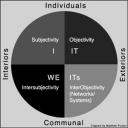 HERE
HERE 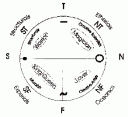 HERE
HERE
 HERE
HERE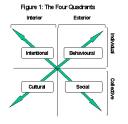 HERE
HERE

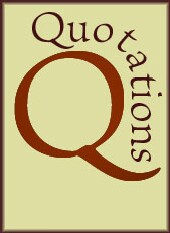

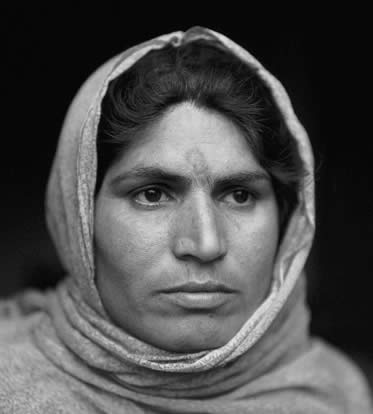
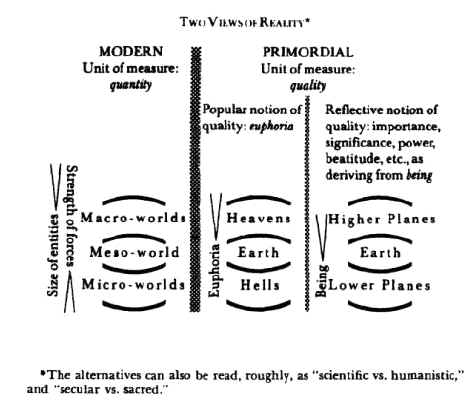

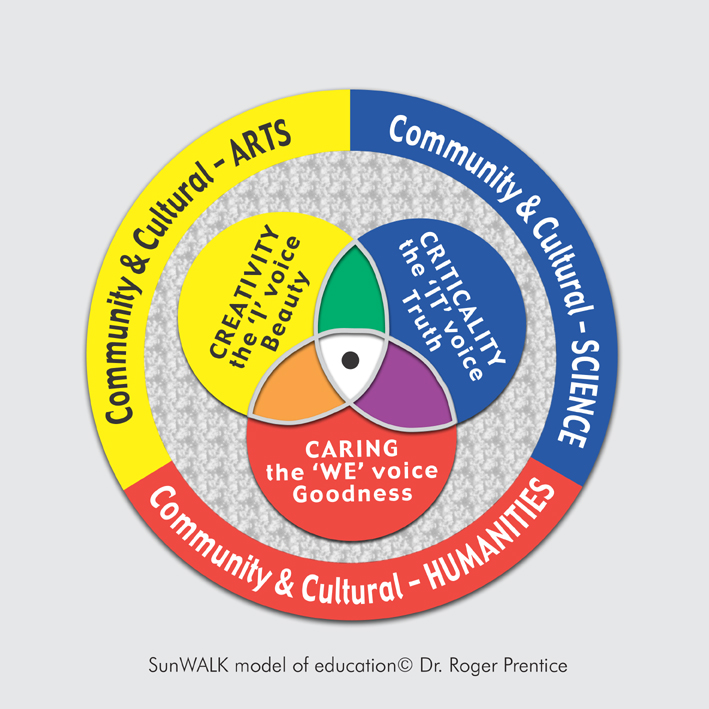

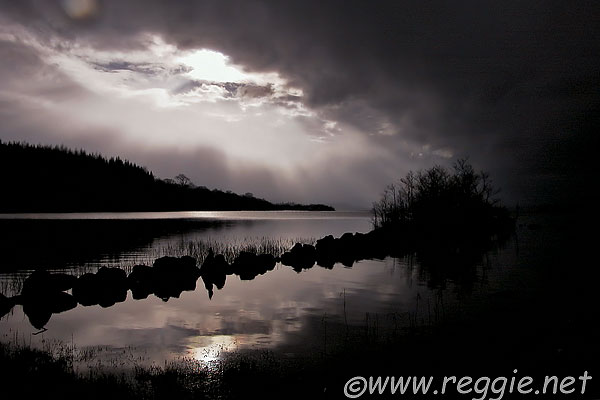 Source
Source Source
Source Source Wiki on Meditation
Source Wiki on Meditation Source
Source
 ‘Bush faces of the Dead – Source and a PoMo (Postmodern) primer
‘Bush faces of the Dead – Source and a PoMo (Postmodern) primer